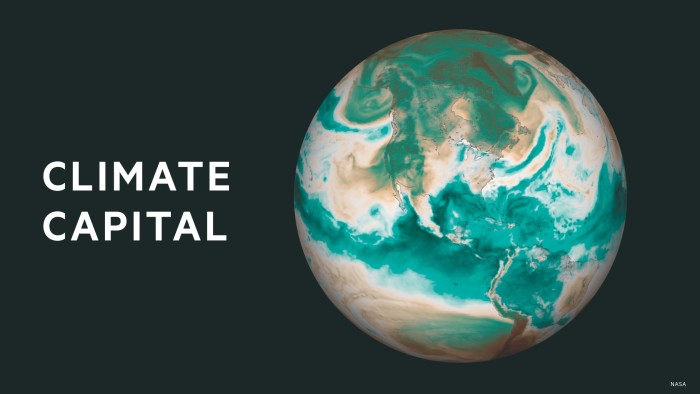
The Financial Times has created a searchable dashboard of 193 countries’ historical emissions and future climate targets, providing information on the energy mix that indicates their progress on renewable energy.
The database is in its fifth iteration, after being first published at the time of the UN COP26 climate summit in Glasgow in 2021. It uses data from Climate Watch, the International Energy Agency and the UN.
Legally-binding country targets to reduce greenhouse gas emissions are formally called nationally determined contributions (NDCs) and are recorded on the UN global registry.
These national commitments were required to be updated by February 10, 2025 but only a handful of countries did so. The UN has said it expects further progress by time of the COP30 summit in Brazil later in the year.
This is despite the need for deep cuts in greenhouse gas emissions to limit the global average long term temperature rise ideally to 1.5C from pre-industrial levels, or to well below 2C, as agreed under the Paris accord in 2015.
Already the temperature rise is at least 1.1C, according to the UN IPCC body of scientists report in 2021. This is measured over a period of more than two decades.
Measured over the past year alone, the temperature rise is on track for a rise of 1.5C. The latest UN report warned that the world was on course for a “catastrophic” rise of more than 3C by the end of the century, and that the ability to remain with the target of 1.5C of global warming “will be gone within a few years” without rapid action.
Globally the only decline in emissions came in 2020 as a result of the pandemic shutdowns interrupting human activity, when they fell about 7 per cent.
China remains the world’s biggest annual emitter despite an unparalleled surge in renewable energy. This is because it remains reliant on polluting coal for power, which makes up more than half of its generation.
But it is nearing its goal already for CO₂ emissions to peak before 2030 and achieve “carbon neutrality” before 2060. Its emissions rise was just under 1 per cent in 2024, in part because of a manufacturing slow down but also following the sharp rise in clean energy and spread of electric vehicles.
China has also pledged to track and detect leaks in methane, which holds more warmth than carbon dioxide but is shorter lived in the atmosphere and is regarded as the quickest way to limit global warming in the near-term.
China accounts for about 27 per cent of the world’s CO2e emissions, followed by the US, India, Russia and Brazil. Combined these five nations account for half of the world’s annual emissions.
The US, the biggest emitter on a per-capita basis, has cut emissions since the peak in 2007. But the second Trump administration threat to withdraw from the Paris agreement and pledge to ramp up oil and gas production has put in doubt a high bar set by the preceding Biden administration to cut net emissions by 61-66 per cent below 2005 levels in 2035.
The choice of different baseline years by a country in setting its goals is another of the complexities, making direct comparisons difficult. Baseline years often coincide with historical peaks in national emissions.
The less stringent measure of carbon intensity is also used by developing countries, such as India, to design targets that allow for economic growth. It is calculated per unit of GDP, to take into account the rise of emissions through economic expansion.
Follow @ftclimate on Instagram
Climate Capital

Where climate change meets business, markets and politics. Explore the FT’s coverage here.
Are you curious about the FT’s environmental sustainability commitments? Find out more about our science-based targets here





